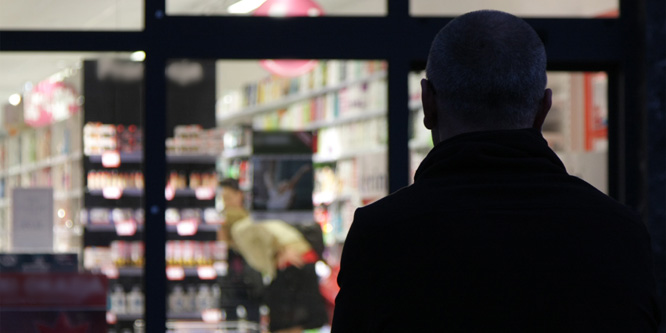
Can retailers take a bite out of organized retail crime?
Shoplifting is a perennial problem for retailers, but some sectors of retail have observed an uptick in an even more costly — and sometimes more dangerous — form of theft.
Home Depot and Lowe’s have both experienced a recent increase in organized retail crime, according to CNBC. In such instances, rather than the casual lone actor, its a multi-state crime ring that targets the retailer. Members of the crime rings steal merchandise and flip it quickly to pawn shops, other underground resellers associated with the ring or sell it online. Retailers have noted that people committing this kind of crime are more frequently armed and/or willing to attack store staff in the course of a theft.
The noted increase of organized retail crime is happening in the DIY/home improvement space, but the costly problem is recognized broadly in the retail industry. In 2005, the National Retail Federation (NRF) began conducting its yearly Organized Retail Crime survey to gauge the impact on retailers. In 2007, 79 percent of retailers reported having been victims of organized retail crime within the past year. By 2018, that number has risen to an alarming 91.6 percent.
Retailers also reported an all-time high in terms of financial losses due to such crime in 2018, with $778,000 per $1 billion in sales lost. Disconcertingly for retail employees who may come face-to-face with criminals, nearly half of retailers reported that organized retail crime gangs have been getting more aggressive.
Earlier this year, the then chief financial officer of Home Depot, Carol Tome, attributed the uptick in organized retail crime the chain was experiencing to the opioid epidemic, according to CNBC.
Local and state law enforcement have been attempting to clamp down on the problem. Last month in Elizabethtown, Kentucky, for instance, 22 people were arrested in association with a retail crime ring. The bust was orchestrated by law enforcement in conjunction with the state’s Organized Retail Crime Association.
Seven out of 10 in the industry argue that the problem has grown large enough to demand a federal law addressing it, according to the 2018 NRF survey.
- Inside Home Depot’s efforts to stop a growing theft problem at its stores – CNBC
- Retailers Battling Organized Crime Rings – RetailWire
- 2018 Organized Retail Crime Survey (Highlights) – National Retail Federation
- 2018 Organized Retail Crime Survey (Full Study) – National Retail Federation
- 22 charged in retail crime blitz – Wave3 News
Discussion Questions
DISCUSSION QUESTIONS: What should retailers do to address organized retail crime as it continues to expand in severity and costliness? What will need to change in order for organized retail crime numbers to begin dropping significantly?


While it is clear organized crime is getting bolder, don’t forget many instances of shrink start in the store with employees either from five-finger discounts (ringing up one item instead of the correct one, entering in discounts or outright theft) or looking the other way on inventory controls, systems and procedures as simple as verifying packing lists. On top of that many movies seem to show how easy it is to steal and not get caught, which emboldens opportunistic theft.
I’ve spoken at a couple of events that focus on loss prevention and related functions and my discussions with attendees are always fascinating. Theft schemes, now extending into the digital space, are mind-blowingly sophisticated and in some cases, just plain in-your-face bold and daring.
The need for dedicated effort and multi-disciplinary collaboration always rises to the top in these conversations. All too often, loss prevention is treated as an afterthought or isolated to the point of being devalued by other functions. For example, merchandising teams unwittingly implementing theft-friendly strategies. Early-stage input from loss prevention professionals can mitigate future losses. Navigating local dynamics including law enforcement practices and availability, also makes it difficult to standardize processes. Researching and reaching out to community leaders and law enforcement in advance of store openings would seem to be worth the investment.
This is nothing new, but it is definitely growing. Both internal and external theft can be mitigated via some newer security measures, including leveraging technologies like IoT, AI and others. The physical presence of uniformed security staff in-store never hurts.
Until we as a country get serious about addressing the root issues of healthcare, homelessness, and the easy availability of weapons, no sector of our economy or society is going to be safe. And as long as those in political power continue to ally with those who profit from these problems continuing (and feel free to commit crimes themselves), all we can do as businesses and local governments is play whack-a-mole. Retail theft is a symptom, not the disease.
I am the Founder / President of NAORCA Worldwide. We provide business services and solutions for industry sectors especially retail.
Visit us at www.naorca.org
Happy Thanksgiving!